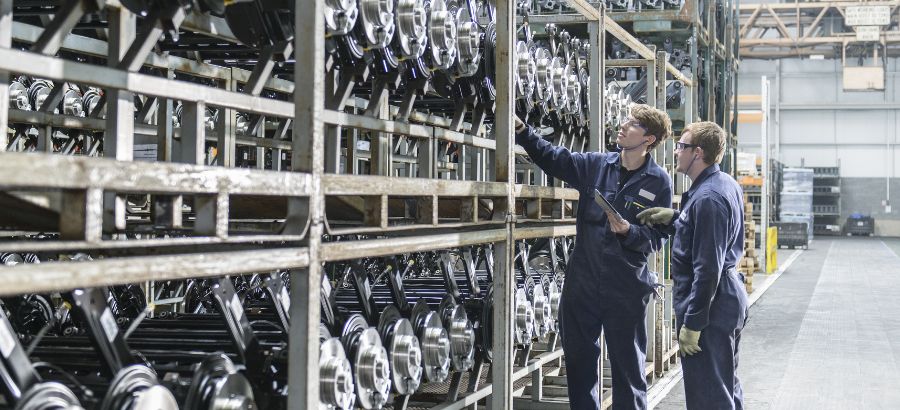For decades, ASEAN manufacturing, once seen as a global phenomenon, had been overshadowed by the meteoric rise of Chinese factories. In 2019, China accounted for 28.7 percent of global manufacturing output and was regarded as the world’s manufacturing superpower.
Of course, the pandemic then hit global shores, not to mention the ripple effects of global trade wars. Recent lockdowns in mainland China left global manufacturers reeling even further due to deteriorating factory production.
For global businesses, supply chain resilience is the name of the game. As a result, supply chain leaders have been exploring alternative, more predictable options. Southeast Asia now holds the potential to increase market share due to its position along global trade routes and as foreign demand for SEA manufactured goods continues to rise in the wake of ongoing disruptions.
The key will be to leverage available opportunities and address gaps to ensure the SEA supply chain can compete on a global level.
Building manufacturing opportunities from the ground up
To enable SEA manufacturers and distributors, governments are implementing policies, collaborating regionally, and leveraging the potential of Industry 4.0.
Policies to promote regional collaboration
Governments across Southeast Asia have implemented several policies to encourage intra-ASEAN collaboration and improved production. This includes multiple free trade agreements and the loosening of tariffs across the region.
To further diversify supply chains, Singapore also established the SG+ twinning model, where businesses can take advantage of dual production locations with its close neighbours including Johor in Malaysia; and the Batam, Bintan and Karimun islands in Indonesia.
According to BCG, opportunities like these would make it easier for SEA businesses to leverage different advantages and skills across the region and as a result, could generate up to $600 billion a year in additional manufacturing output by 2030 as well as $22 billion in foreign direct investment and 140 000 new jobs.
Top leadership support for Industry 4.0
According to the Associated Chinese Chambers of Commerce and Industry of Malaysia’s (ACCCIM) business survey report conducted by PWC Malaysia, 48 percent of businesses said improving digital capabilities was a business priority over the next three years. With those priorities in mind, top leadership has turned their attention towards Industry 4.0.
The new paradigm, underpinned by rapid changes to technology and increasing interconnectivity, will bring major benefits to SEA manufacturers. A report by the World Economic Forum states, ‘Increased productivity from “disruptive technologies” could unleash an additional $220 billion-$625 billion in annual economic impact in ASEAN by 2030.
Transforming a global gap in the market into a regional opportunity
Global supply chain disruptions are leading to global shortages, but also opportunities for diversification in other markets. The war between Ukraine and Russia has led to a global sunflower oil shortage as Ukraine typically exports about half of the world’s sunflower oil supply. The market gap however presents an opportunity for Indonesia, a country responsible for 60 percent of global palm oil production. To support this, Indonesia announced that it would launch an acceleration scheme aimed at shipping at least 1 million tonnes of crude palm oil and derivatives.
While these opportunities have been established aimed to accelerate the growth of manufacturing and distribution, the region will need to address several challenges to reap the rewards.
Challenges to growth with supply chain
Low labour productivity
While governments across SEA have established policies to enable business growth, one shortcoming could be a productivity gap. According to McKinsey, even though ASEAN’s annual exports increased 5.6 percent and the region is experiencing a strong influx of Japanese investment, its ambitions could be hindered by low labour productivity. Vietnam, for instance, seen by some as a close rival to China, is 87 percent less productive than China with respect to daily output per daily wage.
Digital skills gap
Another labour challenge is the skills gap – a global concern. According to the recent SYSPRO research survey entitled ‘Realigning the links of the disconnected supply chain’, while 38 percent of businesses upskilled staff to use business systems to their full extent to drive effective and efficient business operations in the face of the pandemic, 61 percent of businesses had no intention of building long terms skills training programs to enable a digital workforce.
The dark side of supply chain disruptions
Over the past few years, seventy percent of businesses experienced material handling and supply chain disruptions. This was further exacerbated by the Russia-Ukraine war. A repercussion for Southeast Asia has been a chicken feed shortage.
In response, Malaysia has opted to stock up on chicken as part of measures to secure domestic supplies and control rising food prices. The problem however with decisions around stockpiling is that neighbouring countries are directly impacted. Singapore, for example, relies on Malaysia for one-third of its total poultry supply. The question is whether government policies aimed at fostering collaboration will unravel in the short term.
ERP to address industry challenges and leverage regional opportunities
To derive maximum value of SEA as a central component of the global supply chain, manufacturers should look at investing in the right technologies to increase agility and improve visibility across the supply chain. Here ERP is a vital investment as it delivers industry specific functionality for manufacturers and distributors and is a single source of the truth. ERP comes with a number of benefits:
- To take advantage of dual production locations with close neighbours and leverage further collaboration, ERP can be used to integrate data across multiple sites.
- ERP can plug easily into artificial intelligence and machine learning to analyse data which will help businesses to identify trends and even identify anomalies and mitigate risks. Furthermore, ERP will help you achieve your Industry 4.0 goals.
- To address the productivity gap, ERP can give a 360˚ view of your production processes, machinery and labour output.
- ERP also assists manufacturers and distributors to automate the process of managing the balance between material supply, product and service demand, allowing them to optimize the ordering processes and take advantage of batching and realizing economies of scale. This ultimately results improving profitability & cashflow which is critical to any business.
- To address the digital skills gap, a good ERP provider should provide online training courses to ensure employees understand emerging technologies.
While supply chain disruptions have become a reality for global manufacturers, the door is open for South East Asia to become a central component in the global supply chain. Technologies such as ERP can help manufacturers to up the ante by improving productivity, increasing efficiencies and understanding of global anomalies. The winning combination of a visionary leaders and the right technology stack will ensure success.







